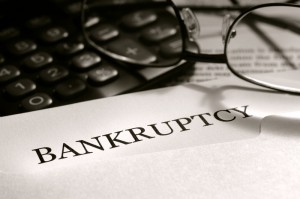 Chapter 13 bankruptcy is a tool for reorganizing debt. The basic idea is to provide a way for debtors to repay some or all of their debt in a way they can afford. Debtors file a Chapter 13 plan that states how they intend to pay their creditors. Creditors like medical providers, credit cards, pay day loans, student loan lenders, and signature loans receive payment based upon the debtor’s disposable income. Creditors could receive nothing, partial payment, or payment in full, all depending ont he debtor’s disposable income.
Chapter 13 bankruptcy is a tool for reorganizing debt. The basic idea is to provide a way for debtors to repay some or all of their debt in a way they can afford. Debtors file a Chapter 13 plan that states how they intend to pay their creditors. Creditors like medical providers, credit cards, pay day loans, student loan lenders, and signature loans receive payment based upon the debtor’s disposable income. Creditors could receive nothing, partial payment, or payment in full, all depending ont he debtor’s disposable income.
High-income debtors may have significant monthly disposable income which causes them to have to pay back all of their debt. In many cases the thing that limits the amount of a debtor’s monthly payment is how much debt the debtor has. For example, a high-income debtor with $60,000 in unsecured debt will have a monthly payment of approximately $1,100 a month in a sixty month plan. However, a high-income debtor with $120,000 in unsecured debt will pay approximately $2,200 per month in a Chapter 13 plan.
Debt has a way of growing. Most loans incur interest, which is how the lender makes money. Some types of unsecured loans have very high interest rates, and when a debtor defaults on the loan the interest rate can increase even more. For example, consider a credit card that is incurring interest at 30% annually. The debts will double every two and a half years.
Filing bankruptcy stops the debt from growing. The claim amount is set on the bankruptcy filing date. Whatever the creditor is owed on that day is what the creditor can get paid in the plan. Therefore, the sooner the debtor files Chapter 13 bankruptcy the sooner the debt stops growing and the less that will have to be paid in the Chapter 13 plan. Delaying the filing of a bankruptcy case can cost tens of thousands of dollars.